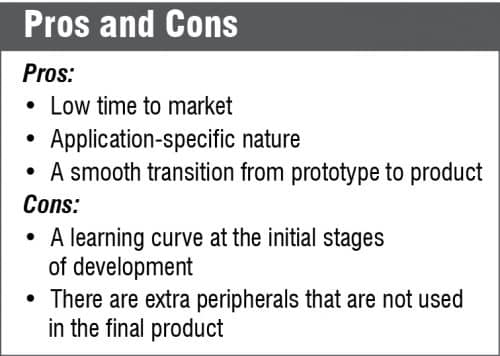Selecting the right development boards for your products is challenging due to the myriad of types and sub-categories. Let’s try to understand what industry-ready community boards are before incorporating them into our designs.
Microcontroller boards like Arduino Uno and ESP32 have certainly made it easy for DIYers and hobbyists to implement their fun ideas and projects in a cost-effective way. But in a professional scenario, where commercially viable embedded devices are to be made, most engineers use these boards for just implementing their proof-of-concept. The next stage of the product development process requires developers to finalise their components, create specification sheets, and ensure that their device is capable of working successfully as a product and not a prototype.
While it is a common practice to migrate from a development board to a custom PCB design, one should also consider the possibility of using industry-ready community boards in one or more steps in the product development life cycle.
Most semiconductor manufacturers create a development board for each microcontroller chip they launch. Nearly all can be programmed using open source integrated development environments (IDEs) and are extremely easy to use. But some of the chips like ATMega328P (the one used in Arduino Uno) offer only basic features.

Then there are others like XMC47xx from Infineon that have a larger memory size, more embedded interfaces, more input-output pins, and, in general, better performance. Simply put, industry-level boards are development boards based on these chips. Although these boards are created for an engineer to get familiarised with the chip and for easy firmware development, they are often considered to be production-level boards. Thanks to their comprehensive features and a wide range of desirable attributes, engineers can choose to deploy them directly in their products. Moreover, they are backed by multiple online forums and communities.
According to their specifications, applications, and areas of production, development boards need to be certified by FCC (Federal Communications Commission) or similar organisations. Most of them are also under the scope of RoHS (Restriction of Hazardous Substances) and need to be RoHS compliant.
When to use them
1. For prototyping
Instead of using a general-purpose development board that is not specifically designed for a particular application, engineers can use an industry-ready development board even at the prototyping stage. Migrating from the Arduino framework to one that is a little advanced might be viewed as a hassle. But it should be considered as an investment for a smoother transition from R&D to production.







I looking for a reputable company specialized in the RF Characterization of Devices and Antennas.
If you have the resource and the equipped fablab.
Feell free to email me